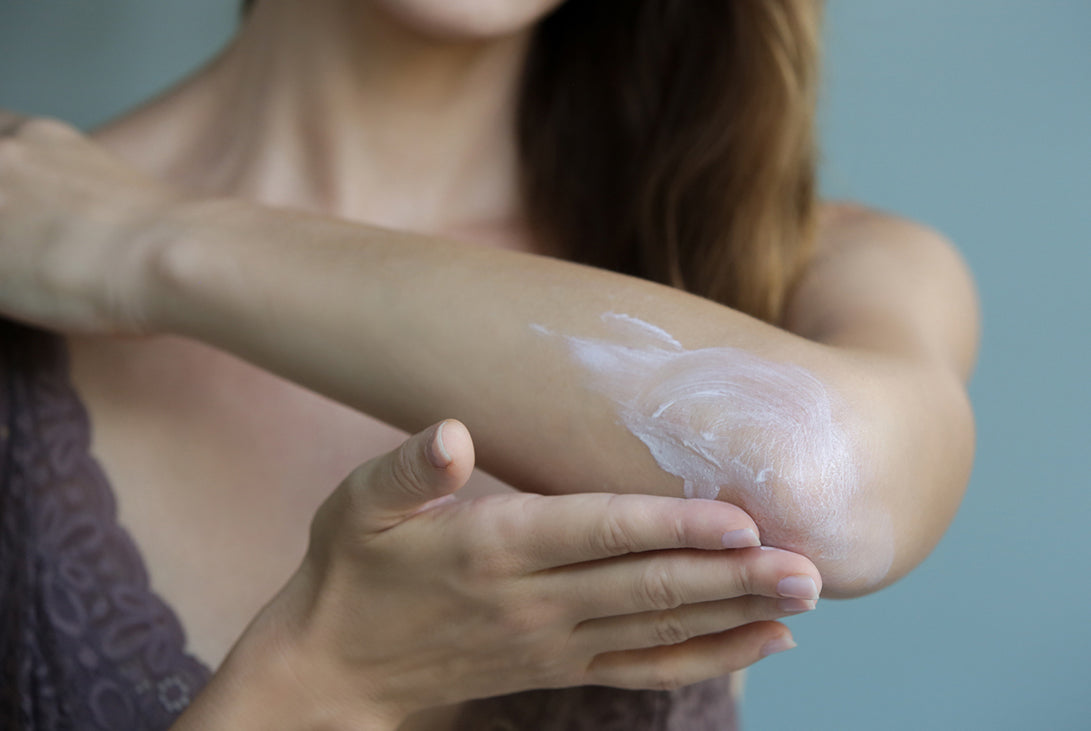
How Chemo & Radiation Affect Your Skin
Cancer treatment changes everything: your energy levels, appetite, and even your skin. While it might not be the first thing you think about, your skin can become one of the most visible signs of what your body is going through, and that can affect not just how you look on the outside, but how you feel on the inside.
During and following chemotherapy or radiation treatment, skin can react in a variety of ways, including becoming itchy, flaky, irritated, red, swollen, sensitive, tight and dry. This can become uncomfortable, painful and even quite distressing, affecting your physical comfort and overall quality of life.
With the right care and awareness, many of these skin-related side effects can be managed, minimized, and in some cases, prevented. We’ll cover how chemo and radiation treatment can affect the skin barrier, what symptoms you might expect, and how to support skin health and recovery with practical tips and oncology-safe skincare.
Why Cancer Treatments Affect the Skin
Chemotherapy and radiation are designed to destroy rapidly dividing cancer cells. Unfortunately, they can also affect healthy cells. Your skin plays a vital role in protecting your body, but during treatment, the skin barrier becomes weaker, more prone to dryness, and less able to defend against irritation, making skin more fragile, reactive, and sensitive.
Each person's experience is unique, but knowing the common changes you might experience can help you prepare and respond with confidence. Supporting your skin on this journey with soothing skincare can make all the difference.
Skin Changes from Chemotherapy
Chemotherapy is a systemic treatment, meaning it affects your entire body. Because of that, the skin issues you may experience can show up almost anywhere — and sometimes in ways you might not expect. Here are the most common chemo-related skin changes:
🧴 Dryness & Dehydration - Chemo can slow natural oil production, leaving skin feeling tight, flaky, or rough.
❌ Sensitivity & Irritation - Skin may start to react strongly to skincare products where it previously didn't.
💢 Rashes & Breakouts - Some people develop rashes or bumpy patches, particularly on the face, chest, or back.
🌑 Pigmentation Changes - Skin may become darker, especially in areas with friction like underarms or elbows.
💅 Nail & Cuticle Changes - Nails might become brittle, ridged, or discoloured. Cuticles can become inflamed.
Tip: Applying the best moisturizer for chemo-affected skin before symptoms begin and continuing to do so regularly may help reduce the severity of the symptoms and help improve and maintain skin comfort.
Skin Reactions from Radiation Therapy
Radiation therapy is a localized treatment, so side effects typically occur in the treated area and build over time.
🔥 Radiation Dermatitis - This is the most common reaction that patients experience. It can start as mild redness and progress to bumps, peeling, blistering, or even open sores if not tended to and managed properly.
⚠️ Dryness, Thickening & Tanning - Skin may become leathery, darker, or feel sunburned, sometimes being long-lasting.
💧 Moisture Loss - The treated area may lose its ability to retain moisture, requiring more frequent moisturizing.
🚫 Hair Loss in Treated Area - Unlike chemotherapy, radiation-induced hair loss is often permanent in the treated zone.
Tip: For active symptoms, an approved radiation dermatitis relief cream can help support recovery in affected areas.
Gentle Skincare Tips During Treatment
Taking a proactive approach can help reduce discomfort and protect your skin. Here are some oncology-safe tips:
✅ Keep it Simple – When caring for skin during and after treatment, we think it’s best to use natural, gentle, hydrating products that aren’t loaded with too many ingredients, as the skin can become hypersensitive. Avoid complex routines and stick to a few essential products: cleanser, moisturizer, and natural deodorant.
✅ Use Lukewarm Water – Hot water can strip away natural oils and worsen dryness. Gently wash skin with a non-irritating, hydrating face & body cleanser to help retain moisture, and rinse thoroughly.
✅ Moisturize Frequently – Apply a barrier-repair moisturizer made with natural oils and healthy ingredients, ideally while your skin is still slightly damp to lock in hydration. Repeat as needed throughout the day to relieve dryness.
✅ Switch to a Natural Deodorant – It's often recommended to switch to an aluminum-free natural deodorant during cancer treatment to help minimize skin irritation.
✅ Avoid Harsh Ingredients – Avoid using harsh ingredients like alcohol, retinoids, AHAs, exfoliants, and essential oils. Steer clear of synthetic preservatives like parabens and phenoxyethanol, as well as penetration enhancers, phthalates etc.
Sulphates (like SLS) found in most commercial and clinical washes can exacerbate symptoms as they tend to strip the skin of its natural oils causing further dryness and irritation. Opt for a formula made with natural cleansers.
✅ Protect From the Sun – Skin is extra sensitive during treatment, so make sure to use broad-spectrum SPF 30+ natural mineral sunscreen and wear protective clothing when going outside, even if its cloudy.
✅ Choose Clothing Wisely – Choose soft, breathable fabrics and loose clothing that doesn’t rub on the skin or cause friction. Skin can become so sensitive that even the touch of water or wind can cause discomfort.
Oncology Care Set – gentle cleanser, restorative moisturizer for post-treatment skin, and an aluminum-free deodorant.
This care pack with oncology-approved skincare products was created to help patients hydrate, protect and soothe their skin during and after treatment. All can be used on skin experiencing any of the mentioned symptoms and can provide physical relief and emotional comfort. Always talk to your medical team before introducing new products.
Skin changes during chemotherapy and radiation are common, but prevention and ongoing care go a long way to providing relief and managing the severity of the symptoms. Supporting the skin with oncology-safe skin barrier repair products is a simple but meaningful way to ease discomfort and promote healing.
Gentle products. Thoughtful ingredients. Care that supports healing, naturally.

